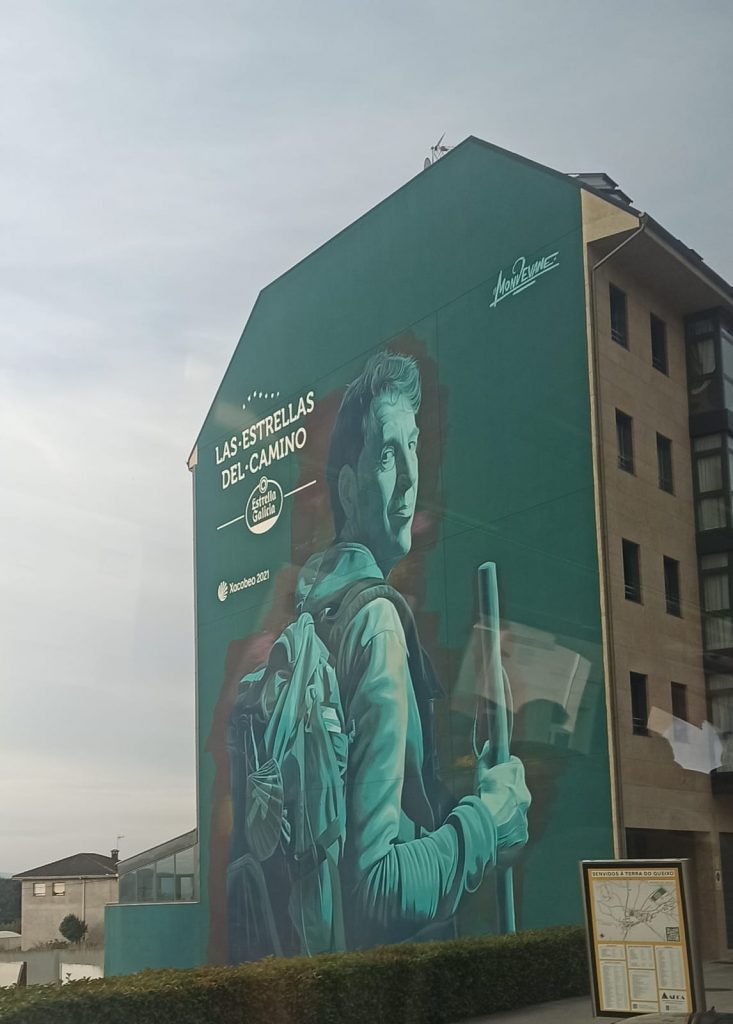
Last interviews in Palas / Las últimas entrevistas en Palas
As our project is coming to its end I´ve taken the last opportunity to talk to pilgrims passing through Palas de Rei with the goal to reach Santiago de Compostela. September is not a high season anymore but there are still quite a few pilgrims, especially foreigners that dedicate more time to walking longer parts of the trails.
Here are three different stories of people who decided to do their Caminos.
Ángel, a pilgrim from Spain, started his way in Sarria aiming to get to Finisterre and Muxía. These stops are the extension of Camino de Santiago known as Camino Finisterre and some pilgrims choose to continue the way after Santiago de Compostela until there. In old times that point was believed to be “the end of the world” that is why it is called Finisterre (or “fin de la tierra” in Spanish).
Angel is already an experienced pilgrim doing the Camino for the second time. Previously in 2009, he did 350 km in two weeks walking the Way from León. For him, the Camino is a great way to spend some time in nature and do sports. Besides, it´s a chance to meet like-minded people and share these moments with them because when you talk the time flies and you don´t think how many kilometres are still left or the muscle pain that makes you suffer. Having chosen the French Way as the most original one he dosn´t deny that might try the Portuguese or Primitive Ways in the future.
For those who do the Camino Angel found very useful the official page of Camino de Santiago as well as the app and webpage of Eroski Consumer. While staying in public albergl pointed out the lack of utensils in the kitchen and wished it was possible to cook there.
The Camino is a sustainable way of travelling as not only does it help reduce CO2 emission but also a way to support the local economy of little towns and communities who live there. On top of that, it´s nature-based tourism that most of the people can do together with their families and kids and the way to teach the young generation how to protect the Camino and its heritage.
During the Camino, Angel learnt mostly about himself and the goals he wants to achieve as well as about the obstacles that you can face doing the Way and how to be ready to overcome them. Thus, he recommends anyone to live this experience at least in their lives.
Angel summed up his adventure in two words such as sacrifice and excitement because when you come to Santiago you finally feel this excitement of arriving at your destination after suffering for a while but you also feel sad because it´s all over.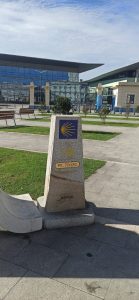
Another story is from a very dedicated pilgrim Mary Joy (M. J.) coming from the USA (Wisconsin) who has done many pilgrimages in the past including the French Way, the Portuguese Way, Via de la Plata, and the English Way with Finisterre. M. J. worked in a public albergue in Ribadiso and got to know other Xacobeando volunteers from Arzua. Later when a friend of hers came to Spain they started their Camino journey together from O Cebreiro.
M. J. shared a very personal life story and how it was connected with the Camino. The first time she did it she had just recovered from her illness being able to walk and carry things again. The Camino journey helped her improve her health and get strength so she would come back to do it again. The magic of Camino for her was in its spirituality, people and history that would make you want to return.
The first two times M. J. shared her experience with her son and daughter and later with a friend. However, most of the time she prefers to do it solo to be able to listen to her body and perceive better spiritual aspects of the Camino and meet other pilgrims or locals. After her first Camino M. J. managed to learn Spanish to be able to communicate with residents better. Thus she prefers staying in public hostels so as to be able to experience the traditional way of pilgrimage just being grateful for having a bed and a roof.
M.J. believes the religious meaning of the Camino is still strong and important which makes this journey magical and helped her fight the disease. Whatever initial motivation you have to do the Camino you can discover much more on the way that will change your way of thinking regardless of your beliefs. And every new Camino is different and will bring something unexpected to explore. You just need to be open to it. 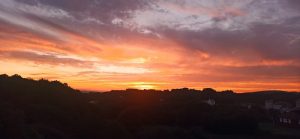
At the same time, M. J. would warn future pilgrims that it´s harder than it seems as physically mentally and spiritually and many things can surprise you, But if you feel a calling that you need to go for it because there is nothing better. Camino creates a place where people have to clear their lives to come and listen to what the world tells them without any distractions. And it´s very powerful because it´s a time when you can listen to yourself and make a decision about what you really care about. In the end, the Camino is a joy for Mary Joy as it´s part of her and her name.
The last pilgrim is Jill from the USA (Florida) who took her three-week holiday to do the Camino with her husband starting from Ponferrada. The reason to do the pilgrimage was to relax and have a big break from busy life and work. As the French Way is mostly talked about and promoted they considered it to be safe, easy to navigate and meet other pilgrims. However, some parts of the trail were still quite hilly and challenging to hike. Jill´s husband made use of the Camino Ninja App when looking for information around but noted that the signing was terrific. Staying mostly in public albergues Jill noticed the lack of wifi in most of them which made it hard for her to keep in touch with her family. 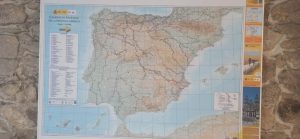
As Jill pointed out it was nice to share and chat with other pilgrims though the language barrier didn´t allow interaction much with locals and the lack of English signing or menus at the restaurants complicated a bit their experience.
Staying mostly in public albergues Jill noticed the lack of wifi in most of them which made hard for her to keep in touch with her family.
As Jill pointed out it was nice to share and chat with other pilgrims though the language barrier didn´t allow interacting much with locals and the lack of English signing or menus at the restaurants complicated a bit their experience.
All in all, Camino had been a very peaceful journey for Jill when you don´t have to stress too much but push yourself a bit to walk. It is gently terrific and not that hard, the only thing you need to do is keep going.
With these words, we hope you won´t stop exploring and looking for your Way that will show you when to slow down or speed up and will reward you in the end. Buen Camino and till the next time!
_____
Como nuestro proyecto va a acabar pronto, aproveché la última oportunidad de hablar con los peregrinos que pasan por Palas de Rei con destino a Santiago de Compostela. Septiembre no es una temporada alta pero todavía hay bastantes peregrinos, especialmente extranjeros, que dedican más tiempo para hacer una ruta más larga.
Aquí están tres historias diferentes sobre la gente que decidió hacer su Camino.
Ángel, un peregrino de España, empezó su ruta en Sarria con el objetivo de llegar a Finisterre y Muxia. Estas etapas son la extensión del Camino de Santiago conocida como Camino Finisterre y algunos peregrinos eligen continuar su viaje hasta allí después de pasar por Santiago. Antiguamente creían que este sitio era el fin de la tierra por eso se llama Finisterre (o Fisterra en gallego).
Ángel ya es un peregrino con experiencia haciendo su Camino por segunda vez. En 2009 hizo 340 kilómetros en dos semanas andando desde León. Para él el Camino es una oportunidad de pasar el tiempo en la naturaleza y hacer deporte. Además se puede encontrar a otra gente con mismas ideas y compartir los momentos porque cuando hablas mientras caminas, el tiempo pasa más rápido y no piensas cuántos kilómetros te quedan o sobre el dolor que te hace sufrir. Al elegir el Camino francés como más original Ángel podría repetir esta experiencia y hacer el Camino portugues o Primitivo en un futuro.
Ángel aconseja a los que hacen el Camino usar la página oficial del Camino de Santiago así como la aplicación y página de Eroski Consumer que es muy útil. A Ángel le gustaría tener en los albergues públicos utensilios en la cocina para preparar su comida ya que no es siempre posible.
 El Camino es una forma sostenible de viajar porque no solo reduce nuestra emisión de carbono pero también ayuda a apoyar la economía local de pueblos pequeños y sus comunidades. Además es turismo de naturaleza que la mayoría de gente puede hacer con sus familias y niños aprovechando para enseñar a la generación jóven como proteger el Camino y su patrimonio.
El Camino es una forma sostenible de viajar porque no solo reduce nuestra emisión de carbono pero también ayuda a apoyar la economía local de pueblos pequeños y sus comunidades. Además es turismo de naturaleza que la mayoría de gente puede hacer con sus familias y niños aprovechando para enseñar a la generación jóven como proteger el Camino y su patrimonio.
Durante su Camino Angel ha aprendido más sobre sí mismo y sus objetivos que quiere lograr así como se ha enterado de los obstáculos a que se puede enfrentarse en el Camino y como superarlos. Por tanto, él recomienda que todos vivan esta experiencia por lo menos una vez en su vida.
Resumiendo esta aventura el Camino es sacrificio e ilusión porque cuando llegas a Santiago tienes la alegría de llegar al destino después de sufrir por un rato pero tambien te da pena que tu Camino se acabe.
Otra historia es de una pelegrina muy dedicada que se llama Mary Joy (M.J.). Viendo de los Estados Unidos (Wisconsin) ha hecho mucho peregrinaje en el pasado incluyendo el Camino francés, Portugués, Vía de la Plata, el Camino Inglés llegando hasta Finisterre. M. J. trabajó en el albergue público en Ribadiso y conoció a los voluntarios de Xacobeando de Arzúa. Después cuando su amiga vino a España empezaron el Camino juntas desde O Cebreiro.
M. J. compartió su historia de vida muy emocionante y como está relacionada con el Camino. La primera vez cuando hizo el Camino M.J. se recuperó de la enfermedad aprendiendo de nuevo a llevar cosas y caminar- El Camino le ayudó a mejorar y sacar las fuerzas para volver y hacer el Camino otra vez. La magia del Camino para ella está en su espiritualidad, gente y en la historia.

Las dos primeras veces M. J. compartió su Camino con sus hijos y después con su amigo. Por lo tanto, prefiere hacerlo sola para poder escuchar su cuerpo, tener una experiencia espiritual y encontrar otros peregrinos y la gente local. Después de su primer Camino M. J. logró aprender español para comunicarse mejor con los residentes. Así prefiere quedarse en los públicos para hacer el peregrinaje de una forma tradicional y solamente estar agradecida por tener una cama y un techo.
M.J. cree que el sentido religioso del Camino es todavía muy fuerte e importante que lleva mágia y le ayudó a luchar contra su enfermedad.No importa que motivación tienes para hacer el Camino al principio puedes descubrir mucho más andando y cambiar tus pensamientos cualesquiera que sean tus creencias. Cada Camino es diferente y pude llevar lo que no esperas. Solamente tienes que estar preparado.
Al mismo tiempo M. J. quería avisar a futuros peregrinos que es más difícil de lo que parece físicamente y espiritualmente por lo que hay muchas cosas que te pueden sorprender. Pero si sientes que el Camino te llama tienes que seguir porque no hay nada mejor. El Camino crea un espacio donde la gente puede limpiar sus vidas y entender que el mundo realmente te dice sin distraerte. Y es muy poderoso porque es el momento donde puedes escucharte a ti mismo y tomar decisiones sobre lo que realmente te importa. Al final el Camino es alegría para Mary Joy porque es una parte de su nombre y su vida (alegria=joy en inglés).
La última peregrina era Jill de Estados Unidos (Florida) que tomó tres semanas de vacaciones para hacer este viaje con su marido y empezar desde Ponferrada. La razón para hacer el Camino era hacer un descanso largo de la vida cotidiana y trabajo. Como el Camino francés es una ruta más segura y más fácil de navegar y encontrar a otros peregrinos, lo eligieron. Por lo tanto algunos tramos del Camino son todavía un poco montañosos y difíciles para hacer senderismo. El marido de Jill utilizó la aplicación Camino Ninja App para buscar la información pero dijeron que las indicaciones eran excelentes.
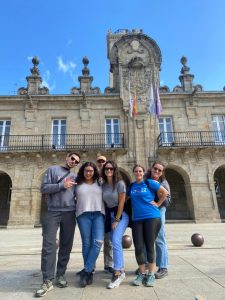
Jill normalmente se queda en los albergues públicos donde a veces le falta la conexión de internet para tener contacto con su familia.
Jill notó que es muy agradable conversar con otros peregrinos aunque la barrera lingüística no permitió hablar mucho con la gente local y la falta de interpretaciones en inglés hizo su experiencia un poco más complicada.
Al final, para Jill el Camino ha sido un viaje muy tranquilo lleno de paz y momentos cuando no tienes que estresarte pero empujar un poco para seguir caminando: “Es fantástico y no tan difícil, lo único que tienes que hacer es seguir adelante”.
Con estas palabras esperamos que no dejes de explorar y buscar tu Camino que te indicará cuándo parar o acelerar y al final te recompensará. ¡Buen Camino y hasta la próxima!
- Pilgrim
- French Way


